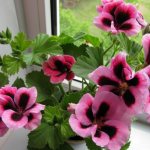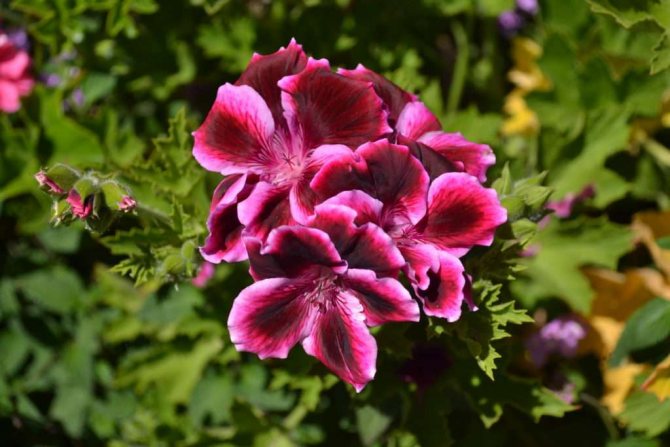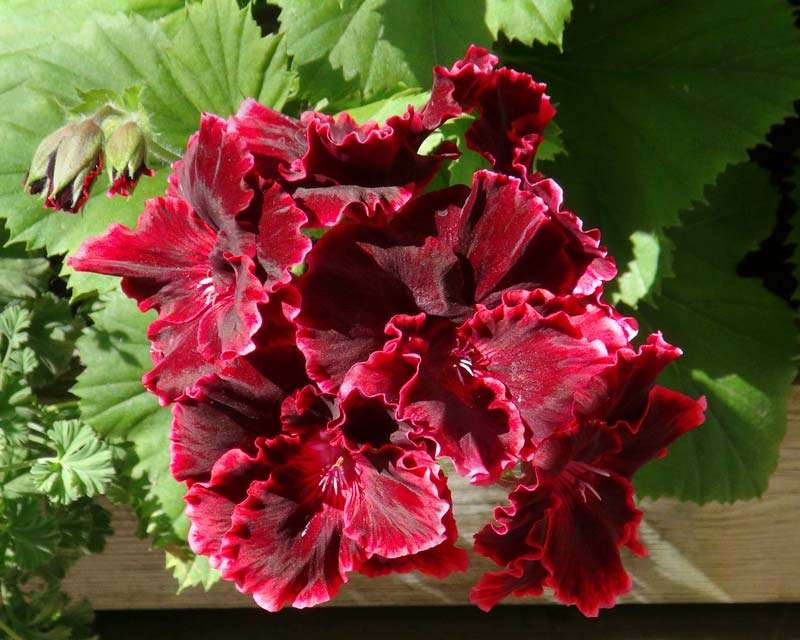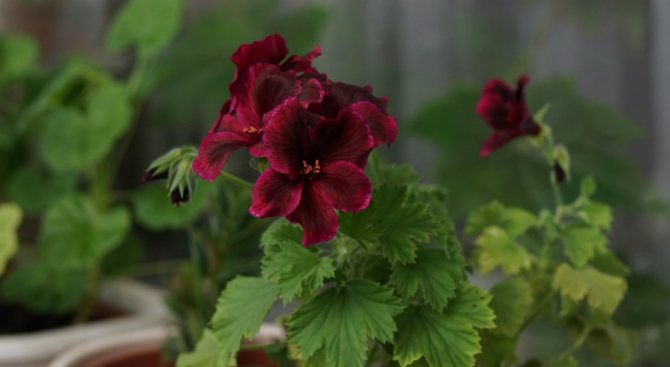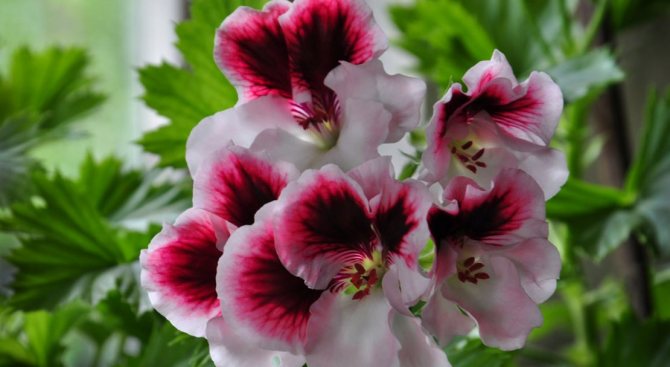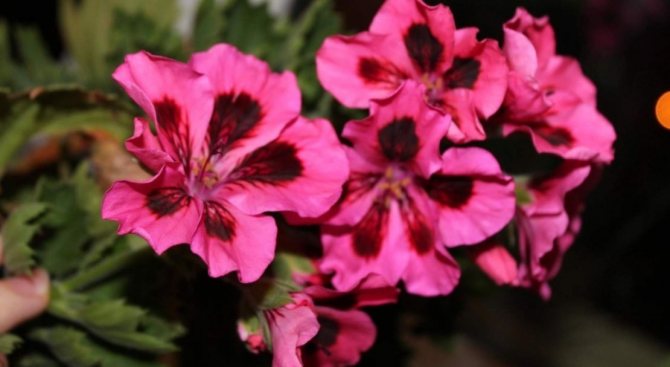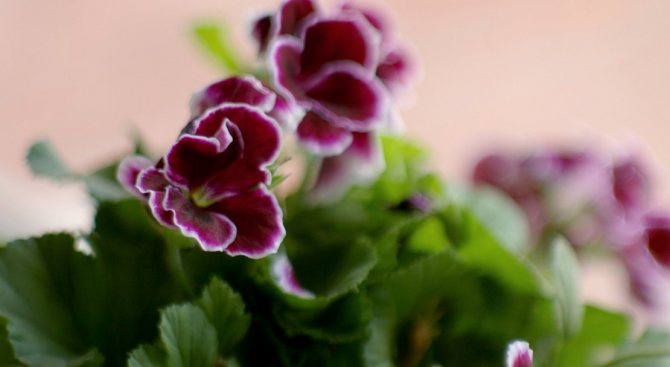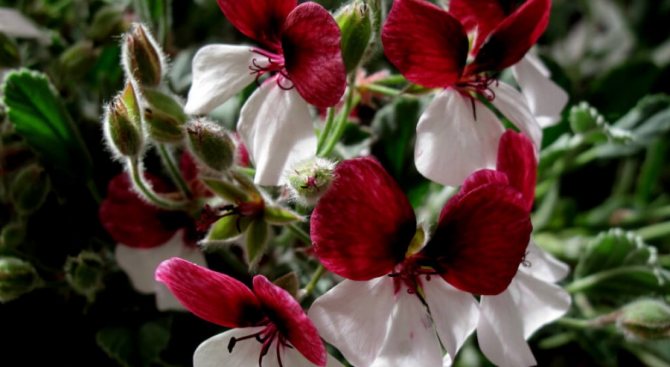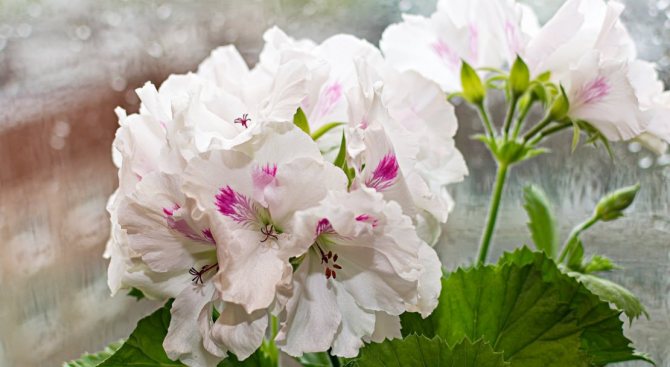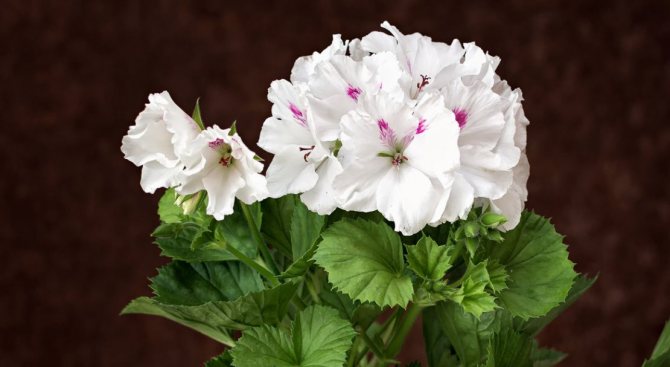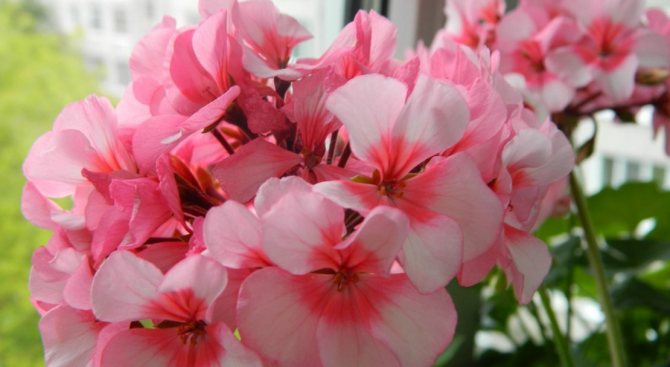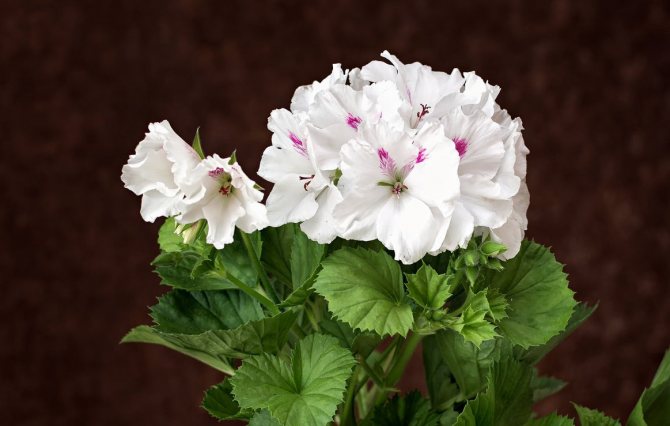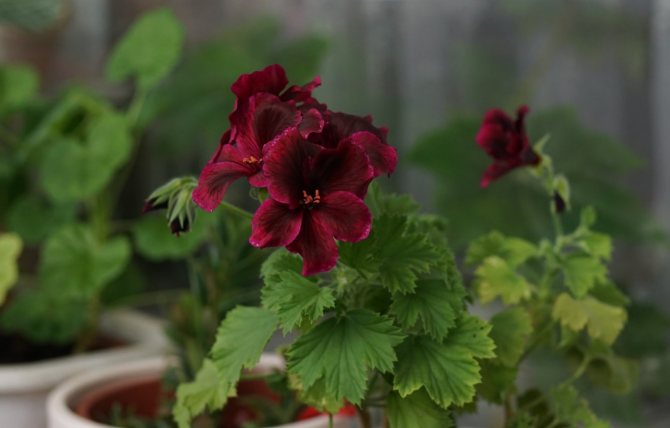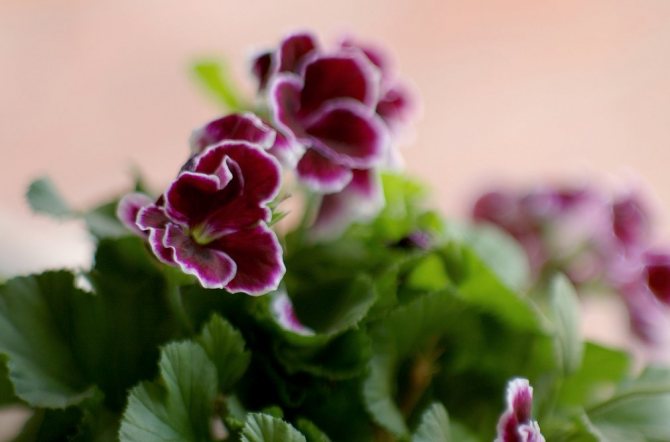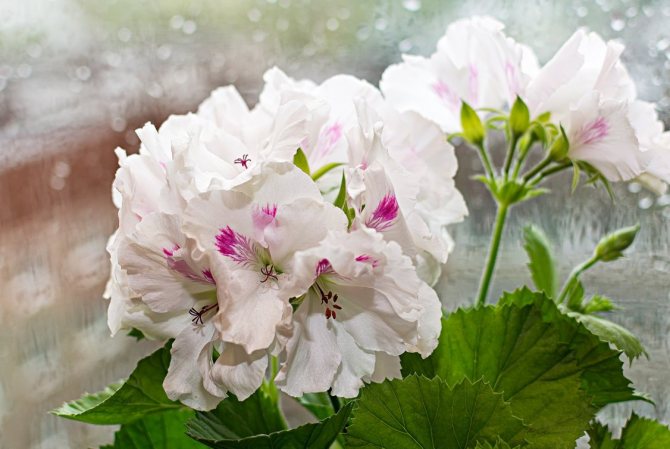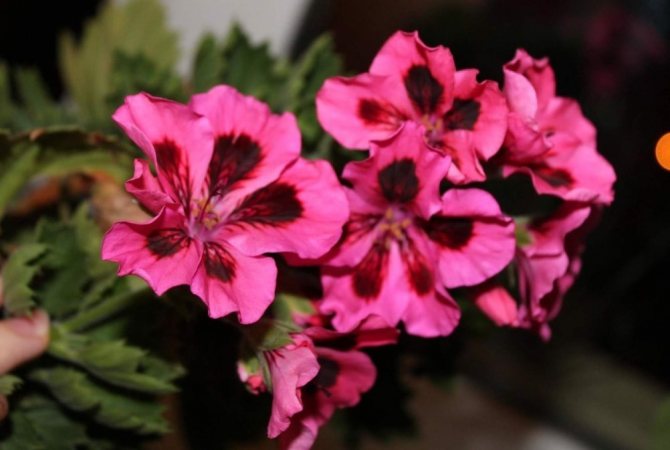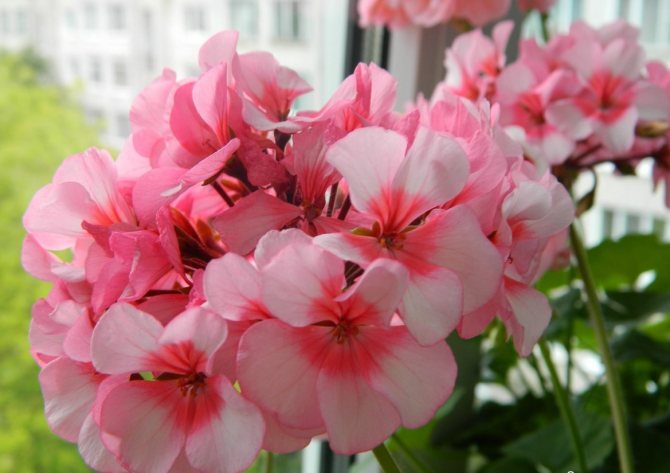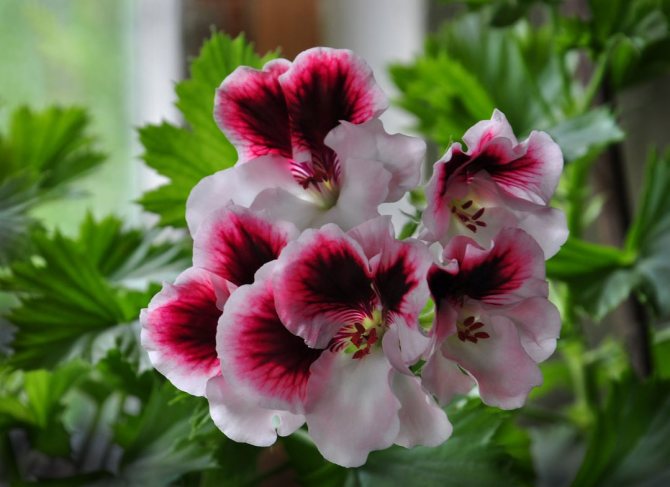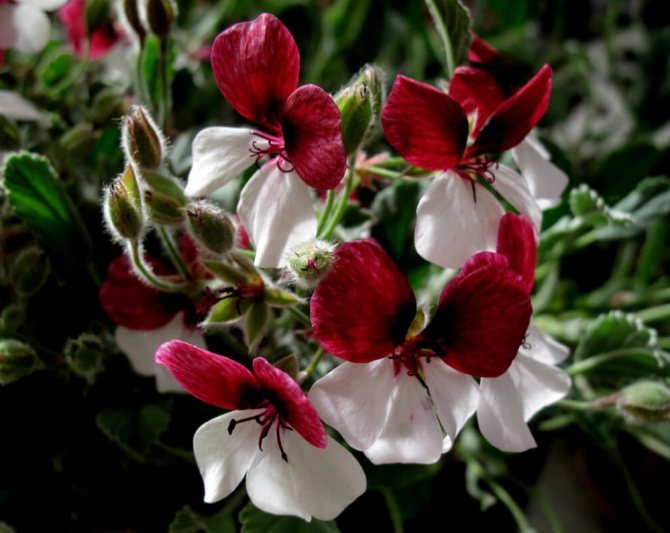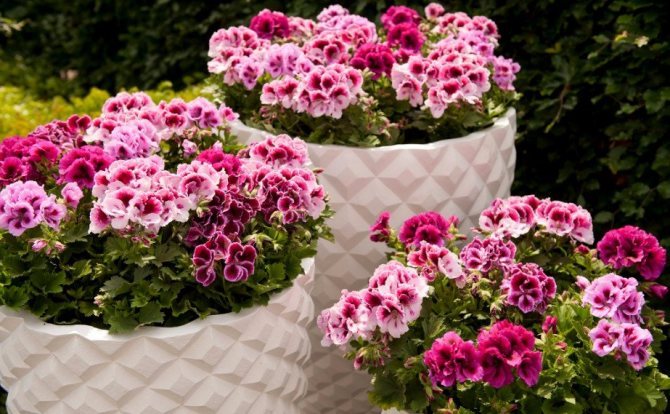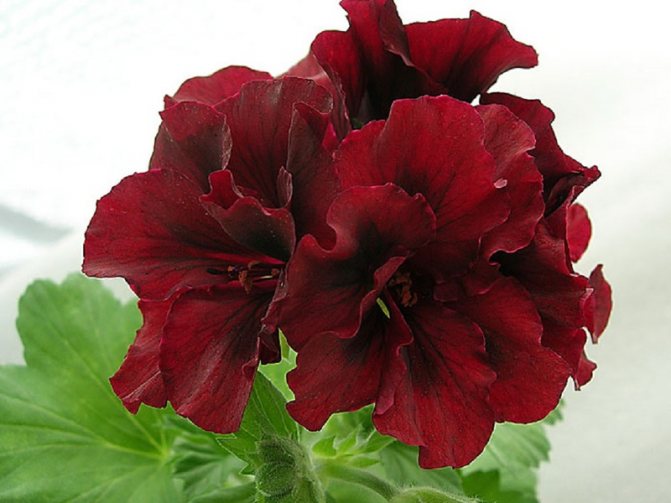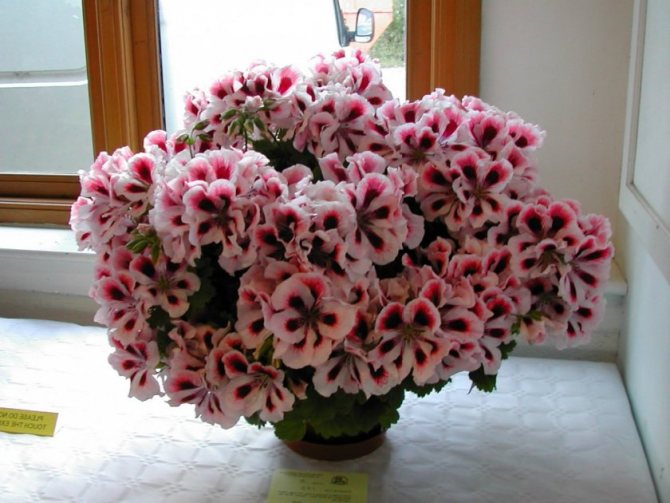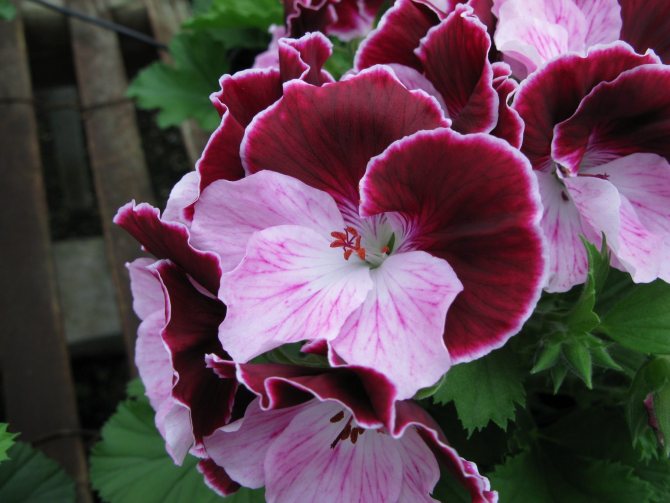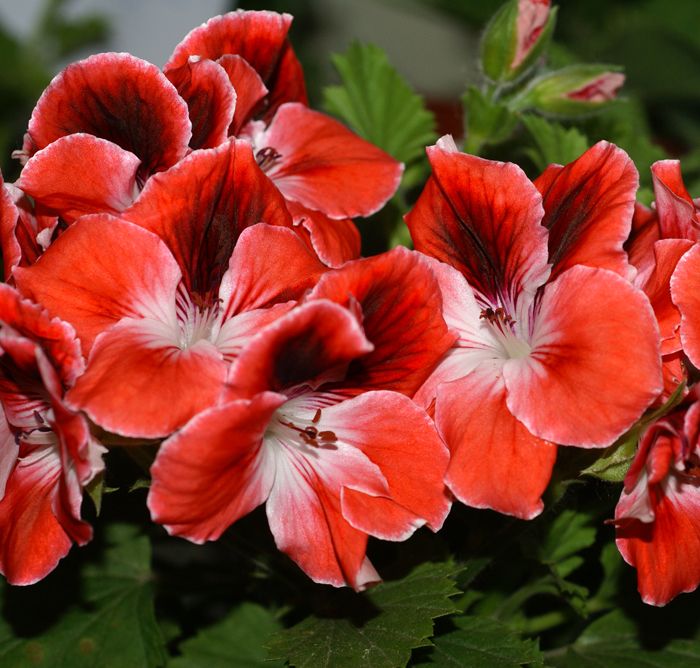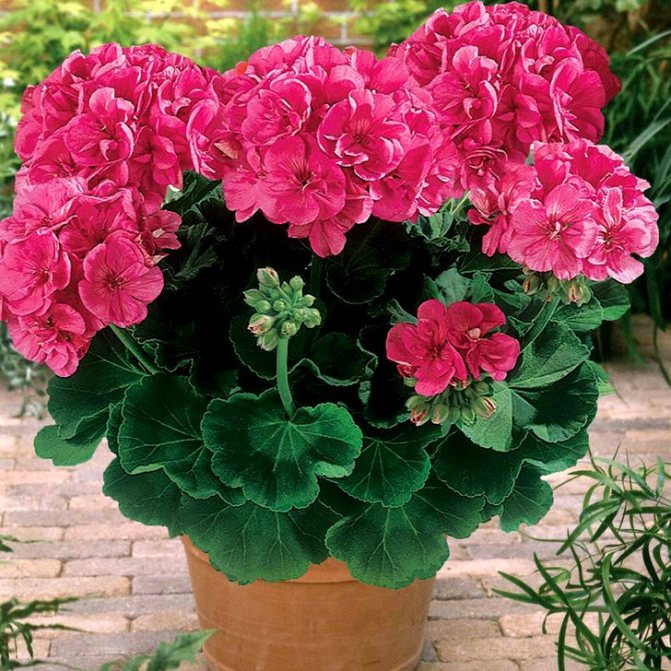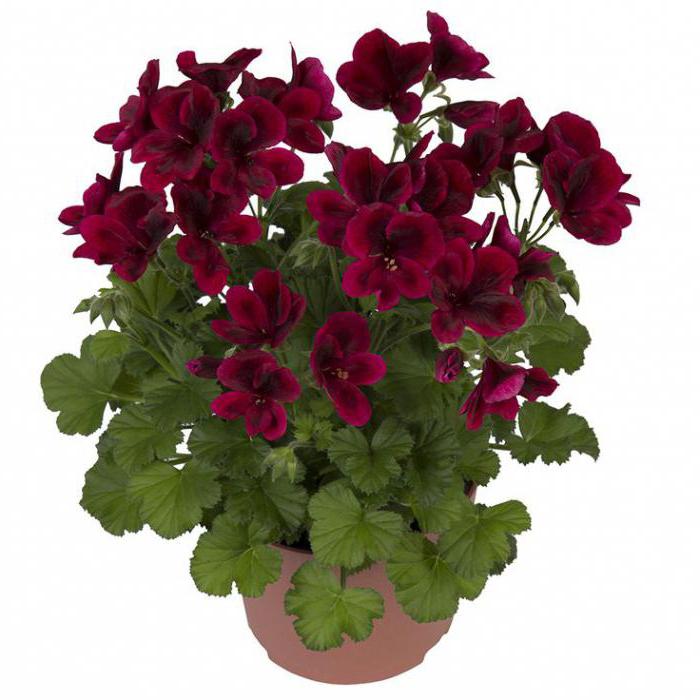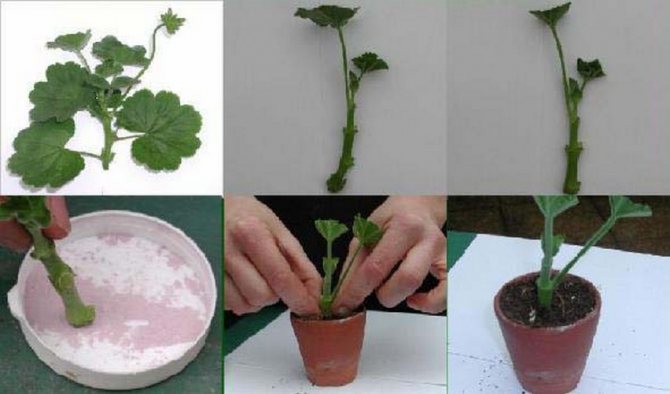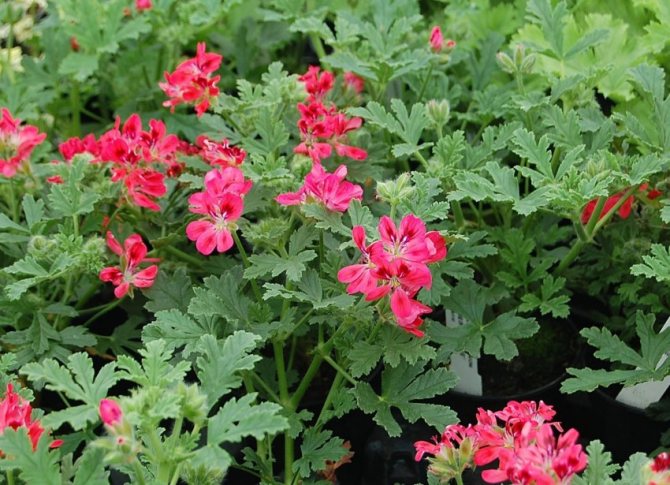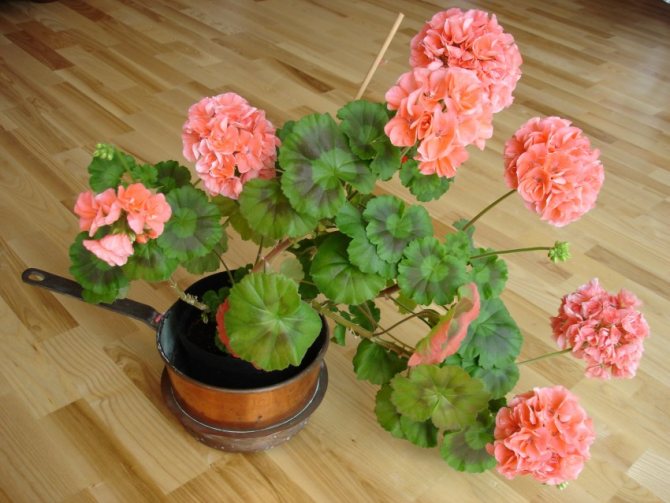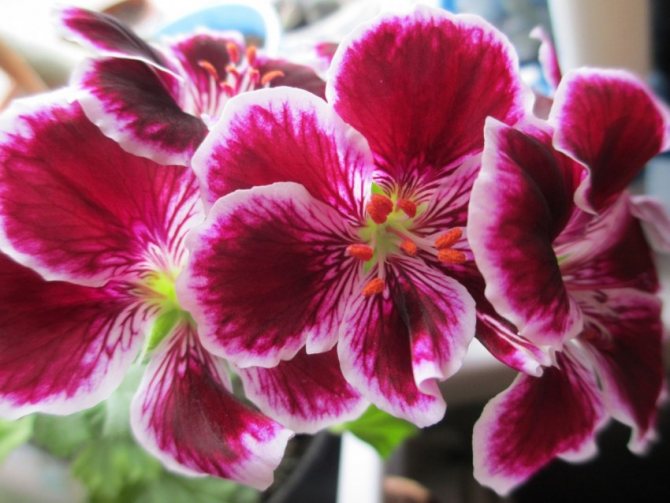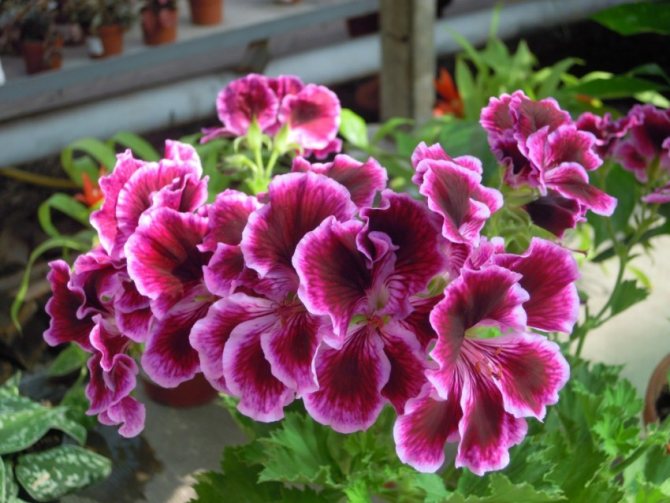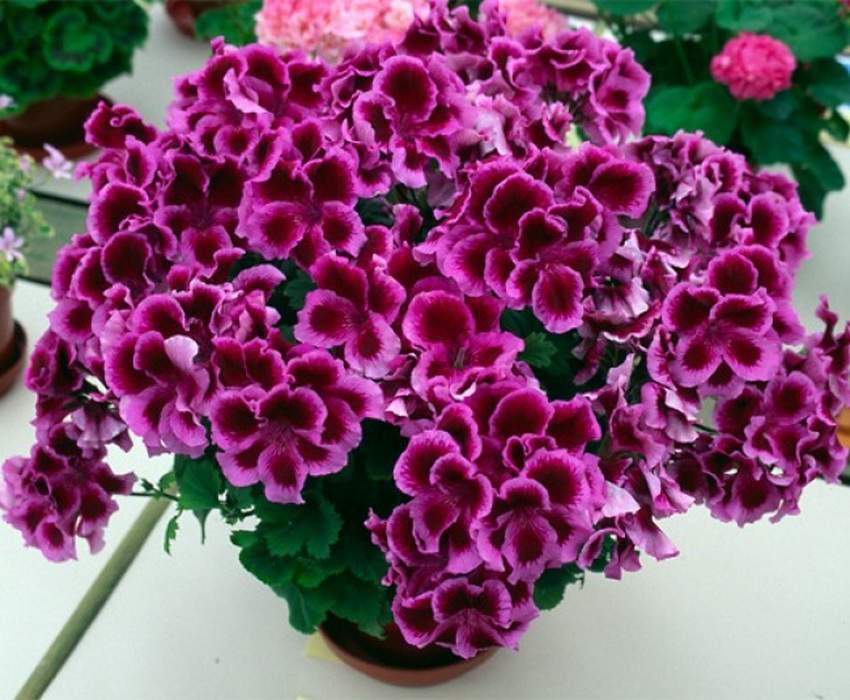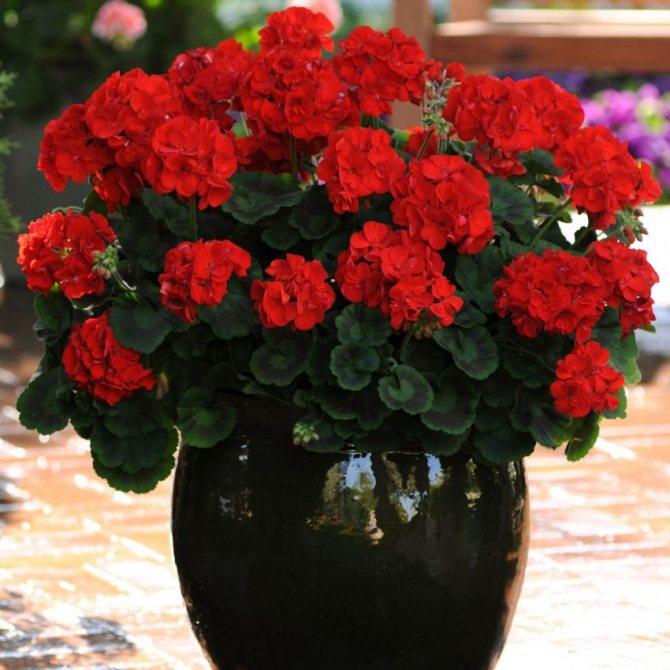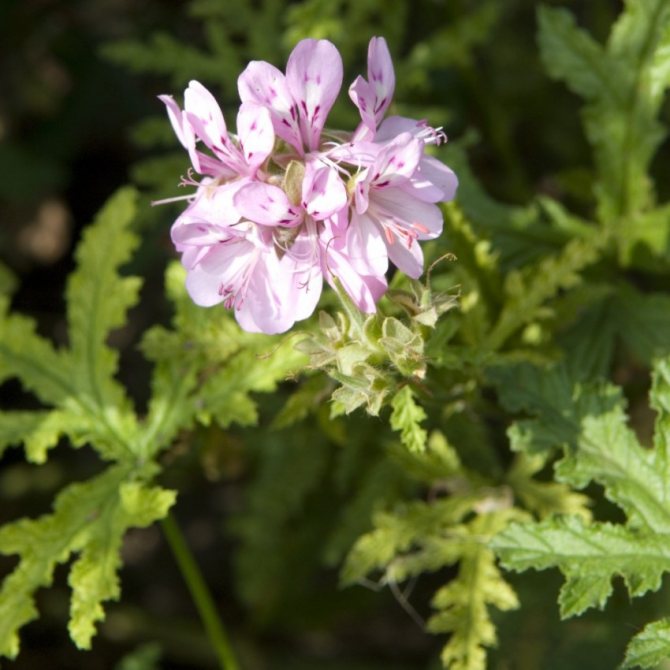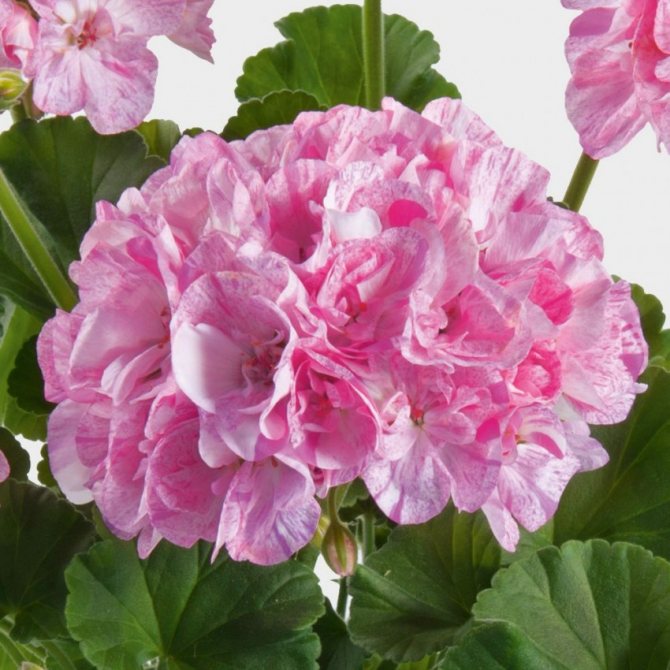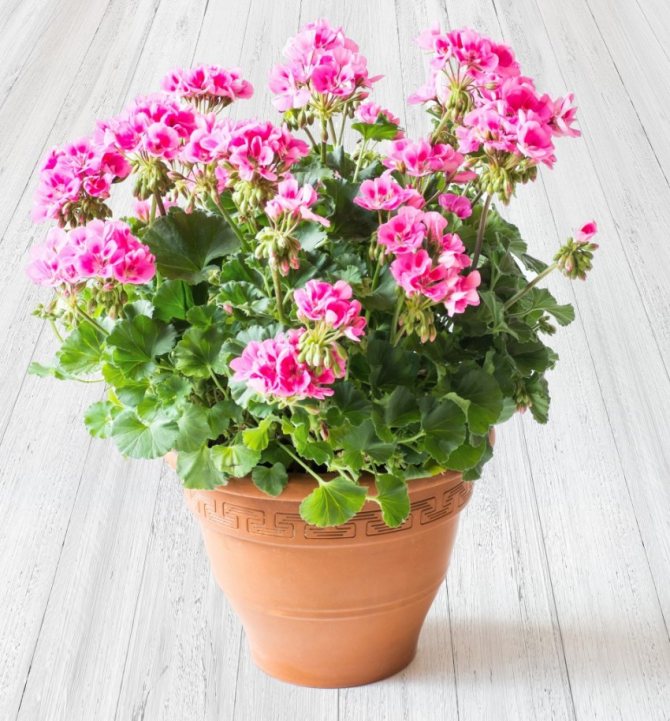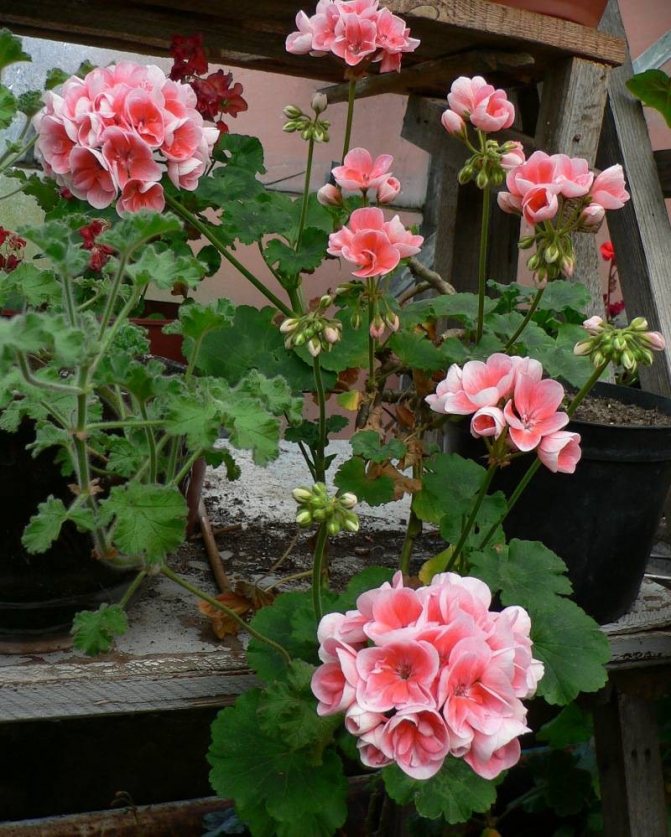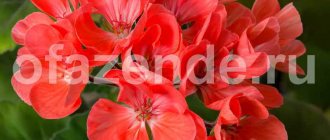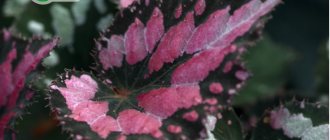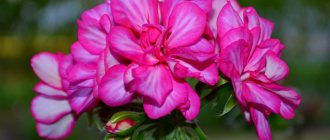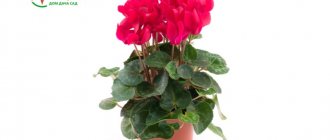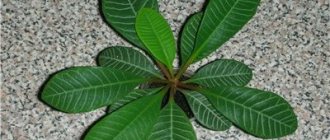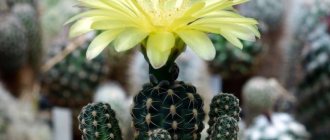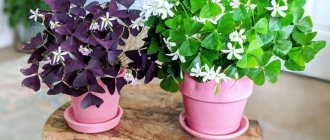If you turn to the specialized literature, you can find out that royal pelargonium is also known under a number of other names - royal geranium, large-flowered pelargonium. For scientists, the more familiar name of the plant sounds like - Regal Pelargonium, Pelargonium grandiflorum. Pelargonium is a member of the Geraniaceae family and can grow to a height of 25–50 cm. However, this plant is best known as a house flower, which can be explained by its long flowering period and unpretentious care. Reproduction of royal pelargonium is simple and effective, since cuttings are most often used for it.
Botanical description of the plant
The plant is popularly called royal geranium, although it belongs to the genus Pelargonium of the Geranium family of the Rosid subclass. He has a lot of alternative names: homemade pelargonium, large-flowered, English, noble. Bred artificially and originated from closed leaf pelargonium (nodular geranium).
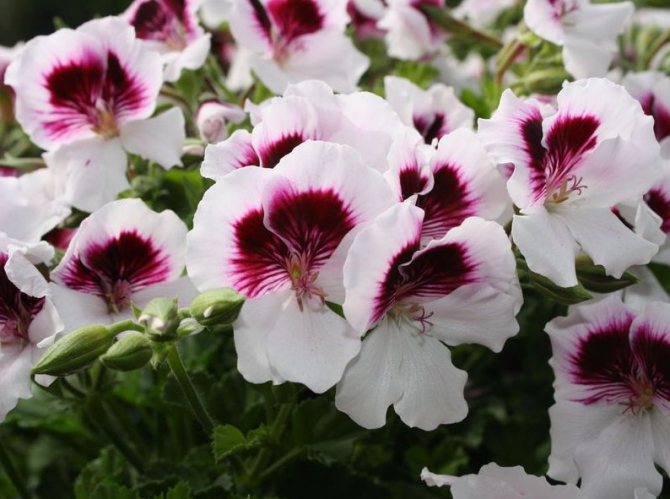
It is a potted plant, but can grow into large shrubs in mild climates. This geranium differs from other representatives in the shape and structure of the flower, as well as in the splendor and location of the inflorescences (not above the bush, but flush with the leaves). It blooms when it is warm - from about April to August. The table below gives a brief description of the main morphometric parameters.
| Parameter | Description |
| Root system | Fibrous |
| Stem | Erect, dense, almost completely hidden under the leaves |
| Leaf shape | Simple, lobed, with a wavy, sometimes serrated edge |
| Leaf color | Green |
| Flower shape | Large (usually from 4 to 7 cm), most often terry, collected in umbrella-shaped inflorescences. Irregular, zygomorphic with only one plane of symmetry. The flower has a long nectar-bearing spur fused with a peduncle |
| Flower color | Varied: white, pink, red, lilac, maroon, purple. Characterized by dark veins and specks |
| The taste of flowers | Bitter, with a fruity mint note and rose aroma |
| Fruit shape | Long, narrow box with sepals, similar to the beak of a bird (hence "pelargos", in Greek - "stork") |
| Fruit color | Green, when ripe - brown. |
Trim order
In order for pelargonium to delight you with lush flowering, a certain order should be observed:
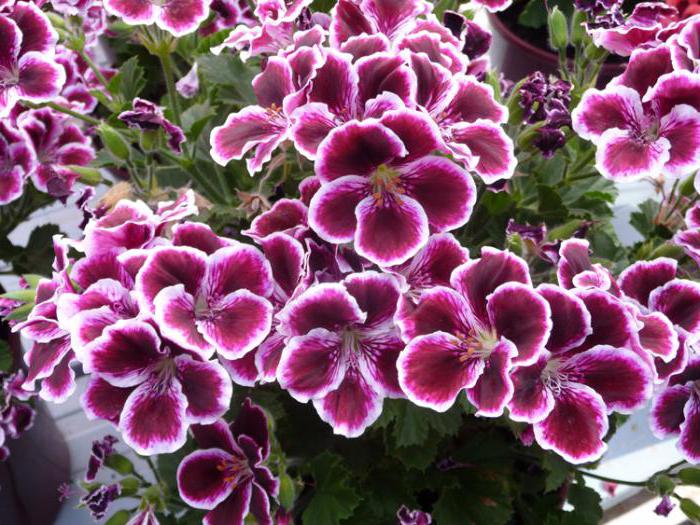

Main varieties
Over the centuries of cultivation, more than a thousand varieties have been bred, and their classification is rather confusing. So, flower growers do not agree on whether to attribute the famous species "angels", which appeared as a result of crossing the royal and curly pelargonium, to large-flowered, or still consider them a separate species. In addition, Pelargonium candy flowers, often referred to as Pelargonium domesticum, were actually bred by crossing angels and royalty.
Did you know? Geranium flowers are used in cooking. They are candied, added to compotes and desserts.
One way or another, most often there are several groups of these plants (actually royal, "angels", candy flowers), which differ from each other in the shape, size and color of the petals, as well as resistance to environmental influences. Each group includes many varieties. Let's consider the most popular ones.
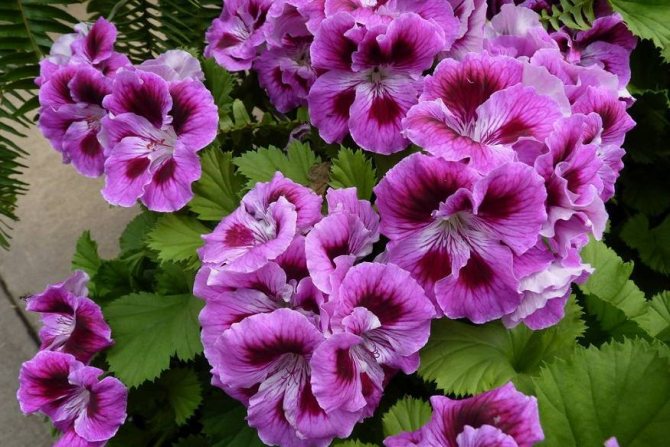

Royal Pelargoniums:
| Variety | Flower color, characteristic features |
| White glory | White without veins and spots |
| Rimfire | Black and burgundy with dark veins |
| Margaret soley | Large (6 cm) light red |
| Joy | Red-pink, reminiscent of primrose |
| Black prince | Dark plum with a silver border |
Representatives of the "angels" group (fragile-looking mini-varieties with fragrant foliage and a short flowering period):
| Variety | Flower color, characteristic features |
| Spanish angel | Purple, 3-3.5 cm in diameter |
| Imperial butterfly | Quite large white with wine-red blotches, leaves with citrus aroma |
| Tip top duet | The upper petals are dark crimson, the lower ones are pale lilac. Differs in early and rather long flowering |
| PAC Angeleyes Viola | White interspersed with pink, leaves with a citrus aroma. |
Representatives of the sandy flowers group (hardy varieties that thrive outdoors) include:
- light pink with dark spots Cambi (Bicolor);
- dark cherry Camred;
- Camdared with their petals tinted bright red on the inside and a paler shade on the outside.
Did you know? One of the Angels varieties is PAC Angeleyes Orange Paccrio with orange flowers and a carrot-like leaf scent.
Diseases and pests: prevention and treatment
Pelargonium diseases include:
- Gray rot. This disease develops due to excess moisture in the soil and a high nitrogen content in it. Brown spots appear on the leaves and stems. A gray bloom appears on all parts of the plant. The flower must be transplanted into a new soil and treated with fungicides such as Fundazol, Rovral, Vitaros.
- Root and stem rot. This disease is evidenced by a black root collar, which begins to rot. The leaves turn pale, and later they turn yellow and wither. The cause of this disease is increased moisture and decreased acidity of the soil. It is recommended to fight rot with the preparations "Biporam", "Fitolavin".
- Late blight. The flower is affected by a fungus and quickly withers and rots. The fungus is mainly transmitted from the ground, but can be transferred from another plant by a draft. The disease develops due to high humidity. Pelargonium leaves turn pale, the plant slows down in growth. You can also notice a white fluff in the center of rot. The plant is treated with Bordeaux liquid. The damaged parts of the plant must be removed, and the cuts must be treated with charcoal. A transplant into a sterile pot and substrate is imperative.
- Eden. Bumps and outgrowths form on the leaves. This disease appears due to waterlogging of the soil. It is necessary to prune diseased leaves and reduce watering.
- Verticillary wilting. This disease is very dangerous. Affected plants should be destroyed, and shoots with signs of the disease should be cut off. Plants must be treated with the biofungicide Trichodermin. And you can also use "Topsin" and "Fundazol".
Pests of royal pelargonium include aphids, ticks, termites, caterpillars and whiteflies. It is best to deal with them with such drugs as "Marathon", "Monterey", "Messenger". And also aspirin destroys insects well: 1 tablet should be diluted in 8 liters of water and sprayed onto the leaves 1 time in 3 weeks.


Conditions for successful growing at home
Royal Pelargonium is quite finicky and requires special care and knowledge of the intricacies of cultivation. Otherwise, it simply will not bloom.
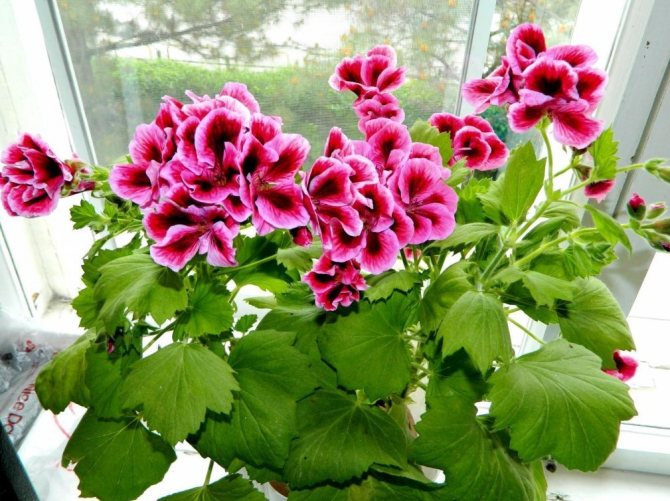

Lighting
Royal Pelargonium loves light - without sufficient lighting, it stretches in length, becomes unaesthetic and loses its immunity. She does not suit windows facing north or obscured by trees. It is optimal to place the plant on the windowsills of the southern windows, turning several times a week at a small angle with respect to the window.
Important! Direct sunlight is dangerous for this type of geranium. In summer, when the sun is especially active, you can cover the windows with tracing paper or floral foil.
Temperature
The temperature maximum in summer is 24 ° C, in autumn the temperature begins to gradually decrease, and in winter, when buds are laid, it reaches 12-15 ° C. To maintain such a temperature regime, you can place the plant on an insulated terrace or balcony.
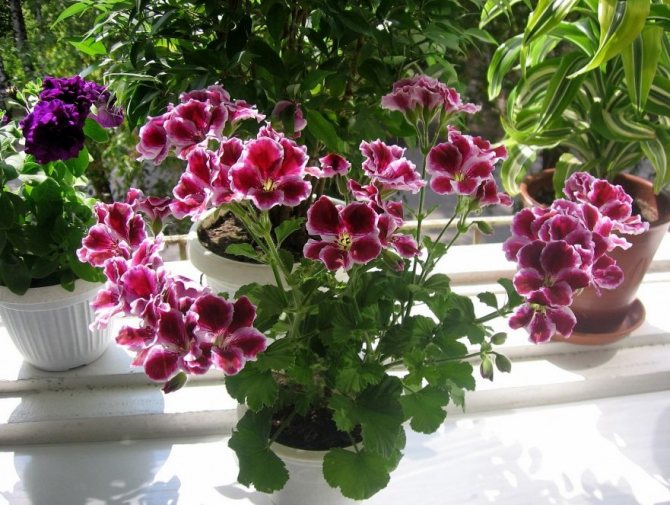

Air humidity
Excessive moisture should not be allowed - this can cause fungal diseases. In addition, good ventilation is required to avoid stagnant air. At the same time, drafts are undesirable.
Royal geranium - what a flower
The royal geranium is considered the most attractive of its kind. The homeland of the flower is South America, so it simply loves a humid climate and hot temperatures. With proper care, the flowering of the plant occurs from mid-spring to autumn, while the weather is warm.
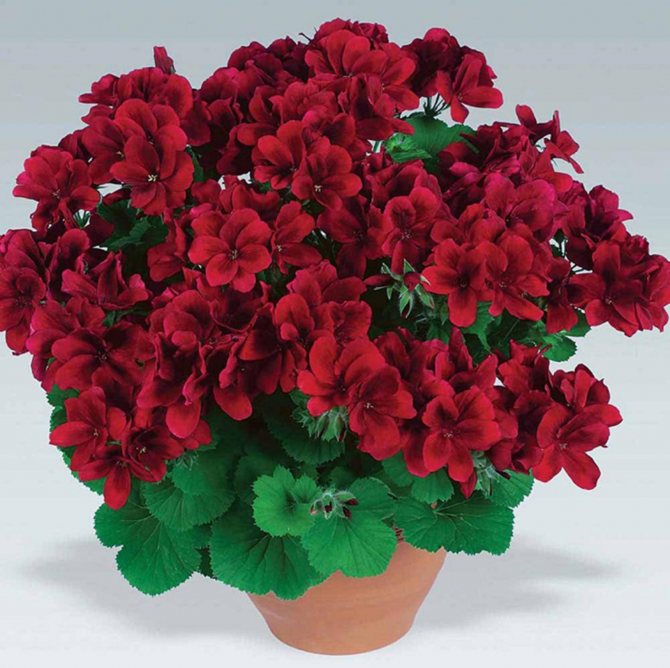

Red geranium
The flowers of the plant are large, painted in a wide variety of tones from white to deep purple. The diameter of the bush can reach 15 cm, and the height of the flower is the same. Geranium buds are large with a terry covering. The edges of the petals may appear wavy or slightly wavy.
Note! Each petal necessarily has a dark stripe or spot. This dark mark is a distinctive feature of this species.
Home care
Having provided the necessary conditions of detention, you can start taking care of it.
Learn how to care for geraniums in winter.
Watering
The watering regime depends on the season. In the summer, it is necessary to water abundantly 2 times a day with settled water at room temperature, but do not overdo it: stagnation of water is unacceptable. Royal Pelargonium does not require spraying the leaves with water. For watering, experienced flower growers recommend using a pallet, then geranium itself absorbs the required amount of water by its roots. In winter, watering is reduced.
Top dressing
During watering, they are fed once every 2 weeks with special liquid complexes for ornamental plants (nitrogen-potassium-magnesium), at the beginning of the growing season by introducing additional potassium for better bud setting. The folk method of feeding consists in diluting a drop of iodine in a liter of water and gently pouring this solution along the walls of the pot. Do not overdo it with top dressing - this leads to burns and yellowing of the foliage.
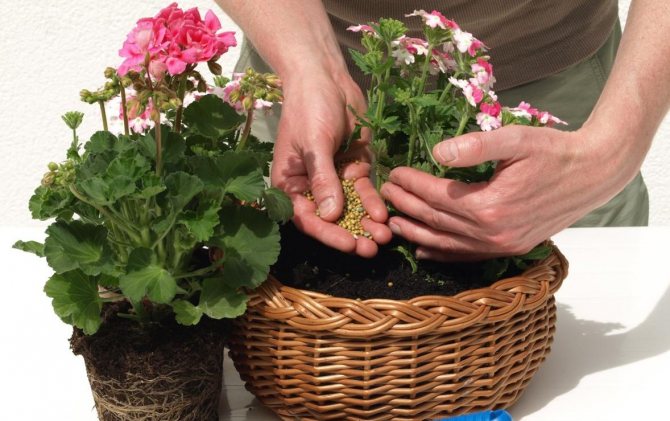

How and when to trim
Florists who have never dealt with royal geraniums have traditionally (and mistakenly) pruned them in the spring, but this can lead to improper shoot formation. The best time for pruning in this case is the beginning of September. For lush flowering and less traumatization of a noble plant, pruning should be carried out in 2 stages.
The interval between procedures is about a month. First, dry and excess stems (about a third) are removed, and the second stage is pinching the formed young shoots, stimulating the active growth of new ones. When pruning, do not forget to use a disinfected tool and process the sections with activated carbon.
Read more about pruning geraniums for the winter.
Transfer
To maintain the decorative properties of geraniums, it is advised to transplant every 2-3 years. It is produced when the roots of the plant begin to show through the drainage hole.The optimal time is from the end of January to March, when geranium wakes up after wintering, but is not yet preparing to bloom. A not too spacious pot is used, otherwise all growth will go into greenery, and there will be no flowers.
Recommended reading
How and when to transplant indoor plants?
The transplant process is as follows:
- Geranium is watered abundantly to make it easier to get it out of the pot.
- The plant is removed along with a clod of earth and placed in a new pot.
- The voids between the container and the plant are filled with moist soil (peat and sand or peat and perlite mixed in equal proportions).
- At the bottom of the pot, drainage holes and a layer of expanded clay or small pebbles are required.
Watering
Probably, after looking at the photos presented in our article, many will really like the royal geranium. Home care for this beauty has its own characteristics. In particular, this applies to watering. This procedure is best done through a pallet. The plant will independently regulate the required amount of moisture. Water for irrigation should be settled, at room temperature, you can use boiled chilled water.
Before flowering, the leaves should be sprayed from time to time. A dry crust that appears on the topsoil is a signal for watering. Excessive moisture can provoke plant diseases, and its deficiency leads to a lack of flowers.
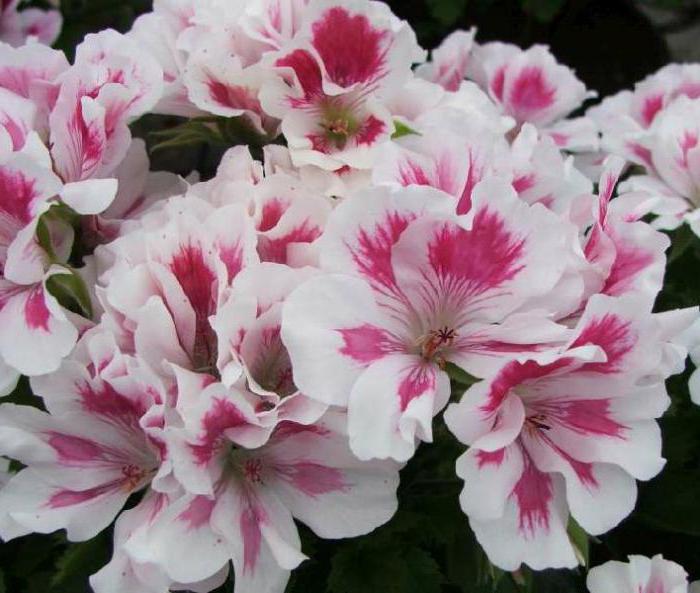

Features of care in winter
Geranium spends the autumn-winter period in hibernation, which determines the specifics of caring for it in the cold:
- Fluorescent phytolamps are used for sufficient lighting.
- The air temperature drops to the already mentioned 12-15 ° С.
- Mineral feeding is stopped.
- If geranium was planted in the garden for the summer (this is most often practiced with varieties of сandy flowers), it is not left there for the winter, especially in the middle lane.
- Watering is reduced, focusing on the state of the earthen coma - it should not be dry.
Tips for Beginners
Many inexperienced growers are faced with the fact that royal geranium does not bloom. This can be due to many reasons:
- plant damage by bacteria and fungi;
- care errors;
- frequent transplants.
- First of all, you need to examine the pelargonium. If there is rot or dark spots on its green part, you need to clean the root system of soil, rinse it under running water and lower it for 2-3 days in a weak manganese solution. The affected parts of the flower should be cut or trimmed.
- Pour boiling water over the soil and pot before planting.
After transplanting a plant, you must carefully monitor its condition.
Reproduction
All gardeners are interested in the reproduction of royal pelargonium, because such beautiful flowers must be reproduced. There are two breeding methods that have their own advantages and disadvantages.
You will be interested to know about the reproduction of royal geraniums at home.
Cuttings
It is produced by rooting cuttings, which are taken not earlier than the end of January - then the level of growth hormone rises, but not later than March - in the spring the budding begins. It is recommended to use separate pots with drainage holes right away. After cutting, the edges of the cuttings are treated with activated carbon powder, dried and planted in the ground (the same mixture is used as for the transplant).
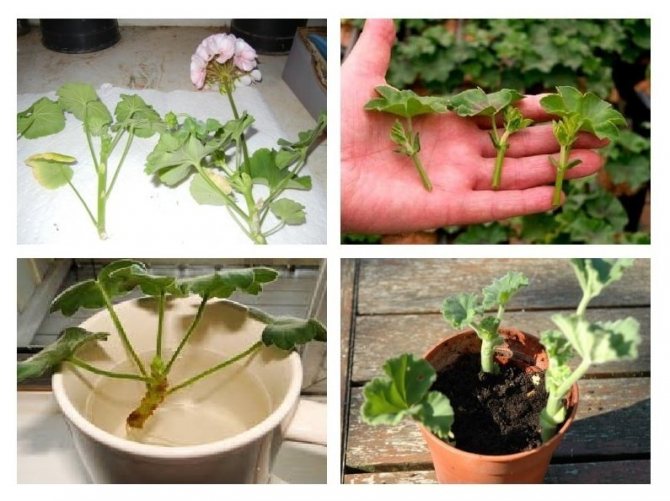

Young plants are kept in a moderately warm room (19-22 ° C), not forgetting to water, and twice a month they are fed with mineral complexes with a reduced nitrogen content (so that the leaves grow less and the flowers grow more). Pinching (removal of the apical buds) is done for the first time in a few weeks over the third pair of leaves and stops when the pelargonium acquires the shape and bushiness desired by the owner.
Growing from seeds
Seed propagation is not a very successful method for this particular type of geranium, primarily because it is difficult to find quality seeds in domestic stores. In addition, with this type of reproduction, such a sign as the doubleness of flowers is almost not transmitted.
If the grower still decides to sow Pelargonium domesticum, it is better to do it in winter. The air temperature in the room should be at least 20 ° C, the soil in the box with seedlings is kept moist. Seedlings usually appear in the 3rd week. After that, the seedlings are transferred to a temperature regime of 15 ° C and, with the appearance of the first leaves, are planted in pots, not forgetting to pinch.
How to properly prune pelargonium
Many growers make a huge mistake when pruning geraniums during the active growth period. Such ignorance leads to the fact that the royal geranium does not bloom. Plants are pruned in late August and early September. This procedure is performed in several stages, observing an interval of 1.5 months. Such a period of time avoids the trauma of pelargonium.
Pinching plants encourages the emergence of new shoots. It is carried out after the fifth pair of geranium leaves. The last procedure should be done in the middle of winter. If during the wintering process the plants are very elongated, then they are pruned.
Video "Royal Geranium: Pruning and Care"
Subject to all the rules of care, royal pelargonium will delight with its lush beauty and require increased attention to its person.
Difficulties in growing
As we have already seen, caring for noble pelargonium has many nuances, non-observance of which leads to disease and pest damage. Let's consider possible problems and how to deal with them.
Find out what to do if the geranium isn't blooming.
Does not bloom
Most often, flower growers are worried about this question: why, even with seemingly correct care, pelargonium does not bloom and what to do about it. You can answer it like this:
- One of the reasons may be the composition of the soil. If the soil is exclusively peaty, then it does not allow air to pass through well and retains moisture too much. Therefore, sand must be included in the composition of the soil.
- Very often, the owners of pelargoniums literally fill them with water, which cannot be done, since because of this, the leaves turn yellow and flowering stops.
- Too large, spacious pots allow the root system to develop at the expense of flowering.
- Pest infestation also negatively affects decorative functions.
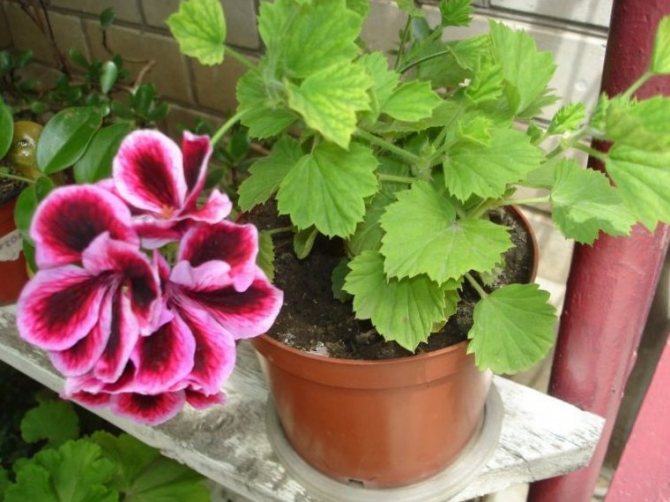

Diseases
The most common disease that these plants are susceptible to is black leg. The reasons for it lie in infection with the Pythium fungus due to improper care: too cold room, large pots, excessive watering. A characteristic feature is the blackening of the stems.
It is practically useless to treat the plant, it is better to attend to its re-rooting. Yellowed foliage can be a sign of not only too abundant watering, but also, paradoxically, insufficient watering, small pot sizes, small or, conversely, excessive amounts of fertilizing.
Important! Freshly planted cuttings are most susceptible to black stems, therefore, in no case should they be covered with polyethylene, thus creating the effect of a wet bath, beneficial for the fungus.
Pests
The main winged enemy of pelargonium is whitefly, outwardly resembling a tiny white butterfly. Yellow spots on the leaves usually indicate a whitefly infection. At the initial stage of midges, you can try to wash off the plant with a damp cotton swab, but the classic way of fighting is to water the soil three times (at weekly intervals) with Aktara.
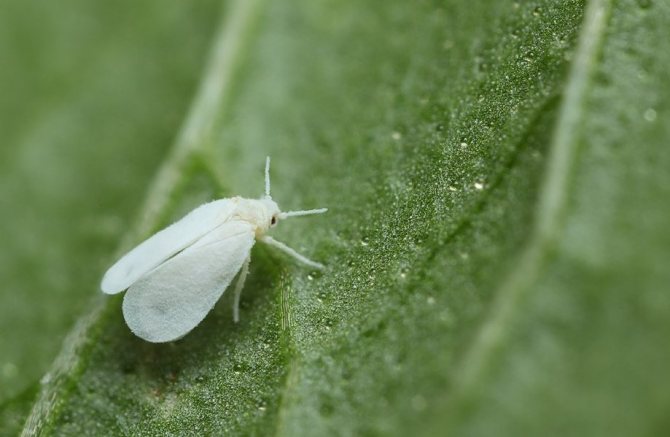

Caring for noble pelargonium in many respects differs from caring for other members of the genus.To understand how to make royal geraniums bloom, you need to remember the nuances associated with watering, pruning and disease prevention discussed in the article, and follow them.
Crown formation
It is necessary to form the crown of the geranium almost immediately after planting the cuttings. The main actions to achieve this goal are pruning and pinching. If the geranium is pruned in the fall, then in the spring you can prune or pinch it. What is the difference? Pinching is the removal of a plant's point of growth. In its absence, geranium throws out side shoots and turns into a small branched tree. The first pinching is done over 8 or 10 leaves. The time of its holding is the end of February-March. Lateral shoots are also pinched as they grow. It is not worth delaying the spring manipulations with geraniums. The later the pinching is carried out, the longer the time until the flowers appear.
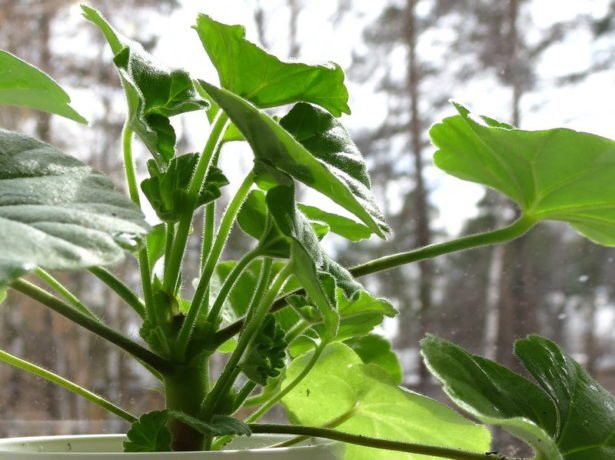

Pinching young shoots accelerates the growth of lateral shoots
Spring pruning is a cut of large stems at the level of the second or fifth leaf from the root. The time of the operation is autumn or early spring.
The basics of correct crown formation
- Carry out all manipulations with geraniums only with processed tools and clean hands.
- First of all, remove (cut or pinch) the shoots growing inside the bush to prevent thickening.
- With a large distance between the pairs of leaves, the stem is cut off immediately above the leaves, making an indent of up to five millimeters.
- First of all, diseased shoots are removed, capturing up to five centimeters of the healthy part.
Step-by-step instructions for spring procedures
Spring work with geraniums is very similar to autumn pruning. The first three steps are exactly the same. But it also has its own nuances.

